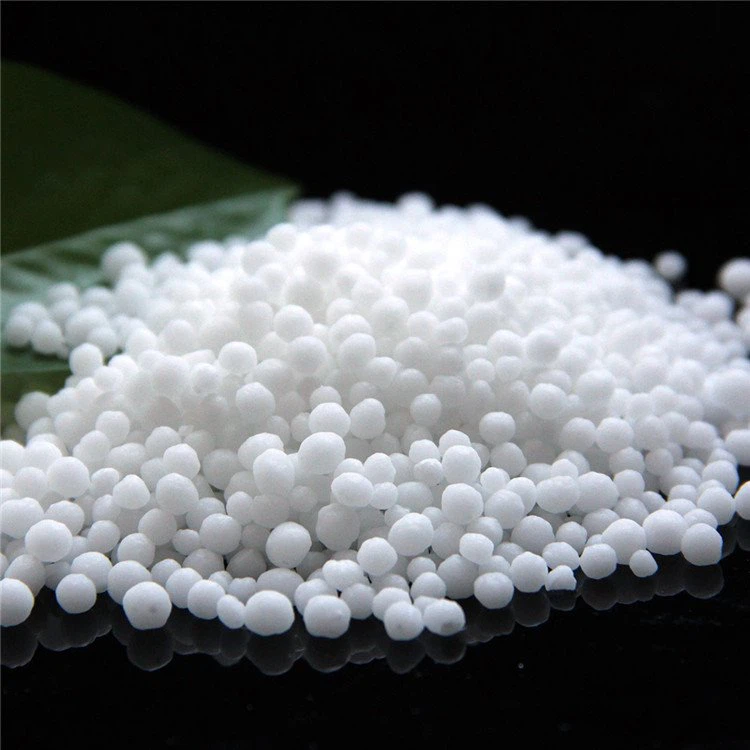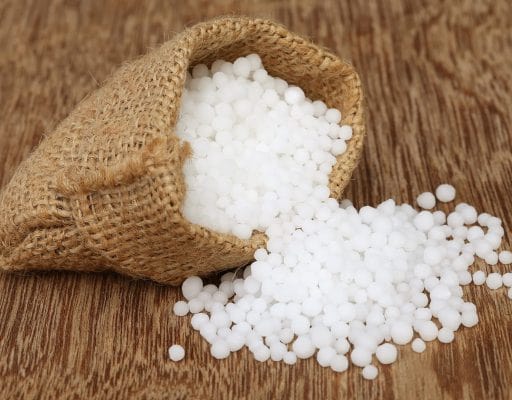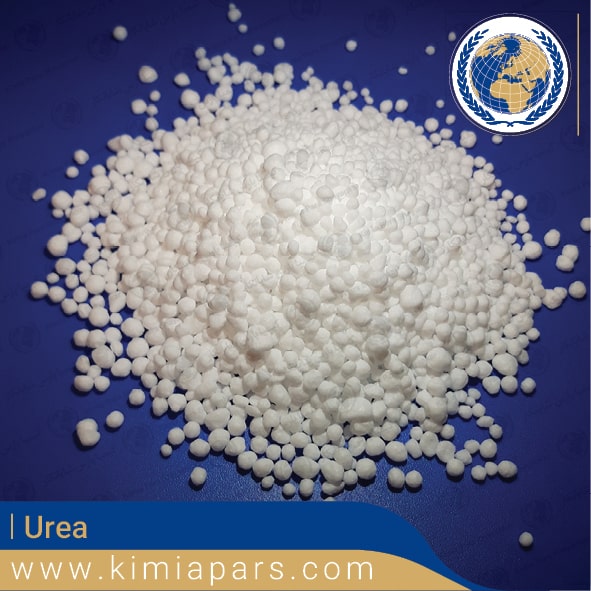Dive into Urea: Applications Revealed
The History of Urea
The history of urea dates back to 1727 when a Dutch scientist named Herman Boerhaave first discovered it in urine. However, credit for the discovery is often attributed to the French
chemist Hillaire Rouelle. It was not until 1828 that Friedrich Wohler, a German chemist, artificially synthesized urea through the treatment of silver cyanate.
This groundbreaking achievement marked the first time an organic compound had been created artificially from inorganic components, without the involvement of living organisms. The significance of this discovery cannot be overstated, as it played a crucial role in the advancement of organic chemistry.
Wohlers success led him to excitedly inform Berzelius, stating, I can produce urea without the need for human or animal kidneys. Ammonium Cyanate is urea. However, it was later determined that Wohlers statement was incorrect.
Although ammonium cyanate and urea share a similar chemical formula to N2H4CO and exhibit similar characteristics under certain conditions, they are distinct chemical substances. Nonetheless, Wohlers discovery solidified his status as a pioneer in the field of organic chemistry.
Urea Production Methods
Urea is industrially produced by synthesizing carbamide from ammonia and carbon dioxide. Carbon dioxide, a by-product of hydrocarbon production, is usually obtained from sources like natural gas or coal.
New technologies have been developed to capture carbon dioxide emissions and reduce greenhouse gases. The main production method, known as the Bosh-Meiser procedure, involves two
reactions:
the formation of carbamate from ammonia and carbon dioxide, followed by the conversion of carbamate to urea. The process requires specific conditions to achieve equilibrium and is carried out
under high pressure and temperature.
Side reactions can result in the formation of biuret and isocyanic acid. Biuret is considered undesirable in urea fertilizer due to its toxicity to plants. Urea is commonly produced in granular or crystalline form for use as fertilizer. In laboratory settings, urea can be synthesized through reactions involving phosgene, amines, and isocyanates.
Overall, urea production involves complex chemical processes aimed at obtaining a high-quality product for various applications, including fertilizers.
Urea Physical and Chemical Characteristics
On the account of physical and chemical properties of Urea , the related information are
provided in the table below.
Urea Characteristics |
|
|---|---|
| Compound name | Carbamide |
| IUPAC | Urea |
| Other names | 1.Carbonyldiamide 2.Carbonyldiamine 3.Diaminomethanal 4.Diaminomethanone |
| Molar Mass | 60.056 g. mol1- |
| Apparent shape | white solid |
| Density | 1.32g/cm 3 |
| Melting point | (133-135 °C) (271-275 °F; 406-408 K) |
| Alkaline dissociation constant | (pK b) |
| Solubility | Glycerol:500g/L Ethanol: 50 g/L Acetonitrile: ~4 g/L |
| Formation Standard enthalpy | -333.19 kj/mol |
| Flammability point | inflammable |
| Compounds related to urea structure | Thiourea & Hydroxycarbamide |
| Other related compounds | Carbamide Peroxide Urea Phosphate Acetone Carbonic Carbonyl fluoride |
Urea Uses and Applications
Urea has a wide range of applications in various industries. Here are some key uses:
1. Fertilizer:
More than 90% of urea production is used as a nitrogen fertilizer. Urea provides a high amount of nitrogen and is commonly used in solid form for agricultural purposes. It is analyzed in the soil
and converted into ammonium, which is absorbed by plants. In some cases, urea is pre-refined or amended to increase its efficiency in agricultural use.
2. Resin production:
Urea is a crucial ingredient in the production of urea-formaldehyde and urea-melamine-formaldehyde resins. These resins are used in the manufacturing of three-layered sheet resins.
3. Automotive systems:
Urea is utilized in selective non-catalytic reduction (SNCR) and selective catalytic reduction (SCR) processes to reduce nitrogen oxide (NOx) emissions from combustion gases in diesel engines, bi-fuel vehicles, and natural gas engines.
Systems like Blue Tec inject a urea solution into the exhaust system, where it reacts with nitrogen oxide to form nitrogen and water in a catalytic converter.
4. Laboratory applications:
Urea is used in laboratories to increase the solubility of proteins and as a component in eutectic solvents. It can also serve as a hydrogen source in fuel cells. Additionally, urea is used in brain tissue preparation for transparent imaging of neural processes.
5. Medical uses:
Urea is found in skin creams and moisturizers as it helps retain skin moisture. It is prescribed for various skin conditions such as psoriasis, dryness, rashes, and keratosis. The blood urea nitrogen (BUN) test measures urea levels in the blood and is used as an indicator of kidney function.
6. Other applications:
Urea is used as a component in automotive diesel exhaust fluids (DEF) for reducing NOx emissions. It is also used in animal feed as a growth enhancer, as a non-corrosive alternative to salt for road defrosting, and as a flame retardant in dry chemical silencers. Urea is found in tooth whitening products, skin creams, hair products, and is used in cloud fertilization and cloth coloring
processes.
Furthermore, urea is used in skincare products as a natural moisturizing factor (NMF) to hydrate the skin, exfoliate dead cells, reduce inflammation, and fight microbial infections. It is commonly used to treat skin conditions like eczema, psoriasis, and fungal infections. Different concentrations of urea are available for daily moisturizing and targeted treatments, with patch testing recommended before use.
 Price and purchase of Granular urea 46%
Price and purchase of Granular urea 46%
Urea Safety
Exposure to carbamide (urea) can have various adverse effects on the body. When carbamide comes into contact with the eyes, it can cause irritation, redness, and pain. It may also lead to skin irritation or redness if it comes into contact with the skin. Absorption of carbamide through the skin can be harmful.
If carbamide is accidentally swallowed, it can cause irritation in the digestive tract, resulting in symptoms like nausea, vomiting, and diarrhea. In severe cases, it may even lead to heart disorders. Therefore, complete swallowing of carbamide can be harmful.
Inhalation of solid carbamide powders or the vapors of dissolved carbamide can irritate the respiratory tract. Prolonged or recurrent exposure to carbamide may have negative effects on fertility.
Carbamide has a stable chemical consistency under normal temperature and pressure conditions. It should be stored away from incompatible substances, cloud-producing environments, and temperatures exceeding 130 degrees Celsius.
Carbamide is incompatible with substances such as sodium hypochlorite, calcium hypochlorite, sodium nitrate, nitrosyl perchlorate, strong oxidizing agents, dichromate, liquid chlorine, nitrates, and permanganate. These substances should be kept separate from carbamide.
During analytical processes involving carbamide, dangerous byproducts such as carbon monoxide, nitrogen oxides, carbon dioxide, and ammonia can be produced. However, the compound itself does not undergo dangerous polymerization.
To ensure the safe storage of carbamide, it should be kept in well-ventilated areas. Measures should be taken to minimize the generation and accumulation of dust from solid carbamide. Avoid inhaling dust, moisture, and vapors of the substance, and prevent contact with the skin, eyes, and clothing. It is also important to avoid consuming food or smoking in storage areas where carbamide is present.
Carbamide is typically packed in small bags weighing 50 kg or in bulk form in 1-ton bags. For export purposes, bulk loading is commonly used, while standard export packaging involves 50 kg packs.
When packing carbamide fertilizer, it is done in 50 kg bags or jumbo bags weighing 1000 kg. These packed products are then transported to the customer's designated location using standard trucks or trailers. It is crucial to handle and transport carbamide safely to minimize the risks associated with its use.
In brief we can itemize the usages of Urea as the following:
-
1. Effects on Skin:
– Carbamide can cause skin irritation and redness upon contact.
– Absorption of carbamide through the skin can be harmful.
-
2. Effects on Ingestion:
– Symptoms may include nausea, vomiting, and diarrhea.
– In severe cases, it may cause heart disorders.
-
3. Effects on Inhalation:
– Inhaling solid carbamide powders or dissolved carbamide vapors can irritate the respiratory tract.
– Prolonged or recurrent exposure to carbamide may have negative effects on fertility.
-
4. Chemical Consistency:
– Carbamide has a stable chemical consistency under normal temperature and pressure conditions.
– Adverse Storage Conditions: Carbamide should be stored away from unsuitable substances, cloud production, and temperatures exceeding 130 degrees Celsius.
-
5. Incompatibility with Other Substances:
– Carbamide is incompatible with substances such as sodium hypochlorite, calcium hypochlorite, sodium nitrate, nitrosyl perchlorate, strong oxidizing factors, dichromate, liquid chlorine, nitrates, and permanganate.
-
6. Dangerous Analytic Products:
– Analytical processes involving carbamide can produce dangerous byproducts such as carbon monoxide, nitrogen oxides, carbon dioxide, and ammonia.
It should be taken into granted that Carbamide itself does not undergo dangerous polymerization.
Conditions for Safe Storage
There are some at the same time important hints that should be under consideration for safe storage of Urea. These hints are categorized as below:
- Carbamide should be stored in well-ventilated areas.
- Measures should be taken to minimize the generation and accumulation of dust from solid carbamide.
- Avoid inhaling dust, moisture, and vapors of carbamide.
- Prevent contact with the skin, eyes, and clothing.
- Avoid eating or smoking in storage areas containing carbamide.
Urea Packing
In regard to some considerable facts based on the overall specification on transferring Urea
here are some dos that should be done:
- Carbamide is packed in small bags weighing 50 kg or in bulk form in 1-ton bags.
- For export, bulk loading is commonly used, while standard export packaging involves 50 kg packs.
- Packing Carbamide Fertilizer:
-Carbamide fertilizer is packed in 50 kg bags or jumbo bags weighing 1000 kg.
-It is transported to the customer's designated location using standard trucks or trailers.
Safe Handling and Transportation
It is crucial to handle and transport carbamide safely to minimize risks associated with its use. Production market, buying and selling urea status.
Urea production is primarily carried out by state petrochemical companies such as;
- Pardis Petrochemical Company
- Khorasan Petrochemical Company
- Lordegan Petrochemical Plant
- M.I.S Petrochemical Industries
- Lavan Chemical Company
- Hormoz Petrochemical Company
- and Kimia Andimeshk Petrochemical Company.
The marketing and export of industrial urea from these state petrochemical companies are significant business operations. Urea, being a versatile chemical compound, finds applications in various industries including agriculture, pharmaceuticals, medicine, and laboratories.
Urea fertilizer is a highly consumed product in the agriculture sector. It is produced in granule or prill form, with a urea concentration of 46 percent and carbamide concentration of 10 percent. Different methods of transport are employed depending on the delivery amount and destination. In recent times, urea fertilizer prices have experienced a significant decline.
This has brought relief to farmers and consumers amidst global inflation pressures. Urea prices are now around one-third of the levels seen in 2022, largely due to the decrease in natural gas prices.
Natural gas is used in the production of ammonia, a precursor to urea. Additionally, ample production and exports from countries like Russia have increased the supply of urea in the market. Australia, which imports 90% of its urea requirements, is constructing a $6 billion plant in the Pilbara region to enhance domestic production. This plant is expected to commence operations by mid-2027.
Lower fertilizer costs have the potential to help farmers increase yields and reduce food prices, which
have reached their highest levels since 2011, as reported by the UN Food and Agriculture Organization. In
the following, there are itemized notes in which provided based on the mentioned information.
1- Urea fertilizer prices have experienced a significant decline.
2- The decline in prices provides relief to farmers and consumers amidst global inflation pressures.
3- Urea prices are currently around one-third of the levels seen in 2022.
4- The main driver for the decline in prices is the decrease in natural gas prices, which are used in the production of ammonia, a precursor to urea.
5- Ample production and exports from countries like Russia have also contributed to the increased supply of urea in the market.
6- Australia, which imports 90% of its urea needs, is constructing a $6 billion plant in the Pilbara region.
7- The new plant is expected to start production by mid-2027.
8- Lower fertilizer costs have the potential to help farmers increase yields and lower food prices.
9- Food prices have reached their highest levels since 2011, as reported by the UN Food and Agriculture Organization.




